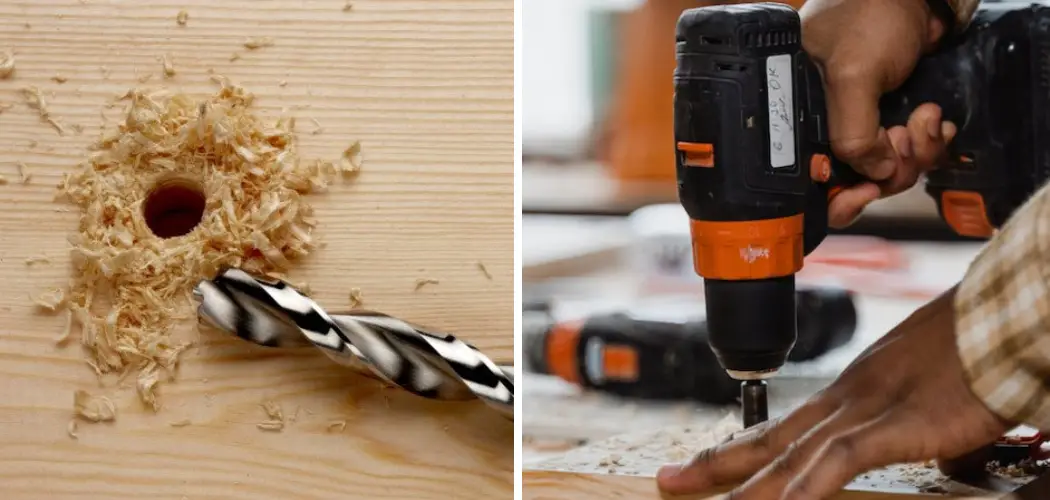Do you ever feel like there’s something missing from your desk? Do you wish for an extra bit of storage space or the opportunity to make it more personal? With a few easy steps, drilling a hole in your desk can open up new possibilities for customization – and we’re here to show you how!
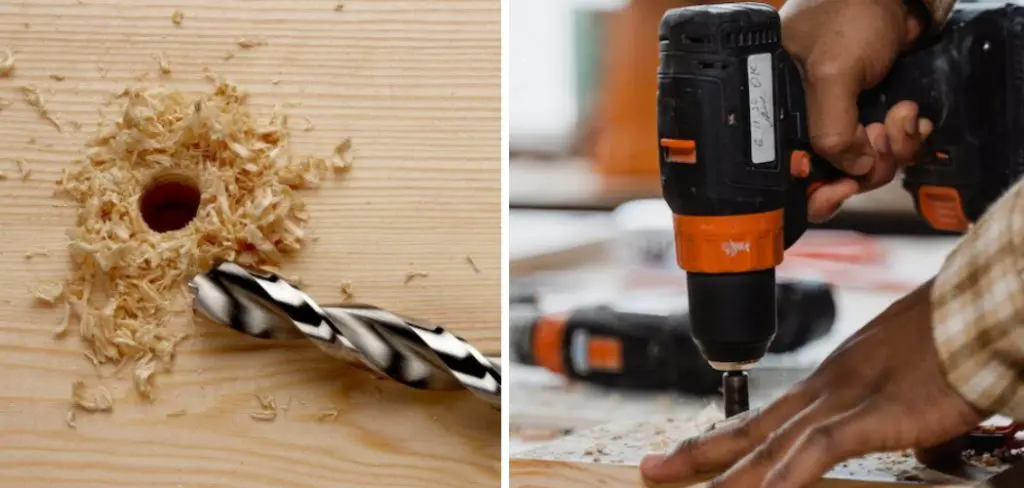
Let us walk through the essential tools, tips, and tricks on how to drill a hole in a desk. Not only will this give your workspace some extra flair but also create helpful solutions in unexpected ways. With our step-by-step guide and an eye for creativity – you’ll have that stylish look before you know it!
Tools and Materials You Will Need to Drill a Hole in a Desk
The most important part of drilling a hole in any surface is being equipped with the right tools. Here are the essentials:
- Drill
- Drill bit: (size will depend on your needs)
- Safety goggles or glasses
- Masking tape
- Pencil or marker
- Clamps or someone to hold the desk in place
Step-by-step Guidelines on How to Drill a Hole in a Desk
Step 1: Preparing and Measuring for the Hole
Masking tape is your best friend when it comes to creating a neat and accurate hole. Use the pencil or marker to draw a circle around the desired area where you would like the hole to be drilled. Then, secure the tape around the perimeter of the circle. This will help keep the drill bit from slipping and ensure accuracy when drilling.
Step 2: Setting Up the Drill
After securing the tape, it’s time to get your drill ready. Make sure you’re wearing safety glasses or goggles and have all the other materials in arm’s reach. Place the drill bit into the chuck of your drill and tighten it with a hex key (if needed). Make sure that it is securely tightened and won’t slip out during the drilling process.
Step 3: Drilling the Hole
It’s time to start drilling! Make sure that the drill bit is aligned in the center of your marked circle before starting. Hold your drill firmly and slowly lower it towards the desk surface, making sure not to apply too much pressure. Once the drill bit breaks through the surface, slowly increase your speed until you reach the desired depth.
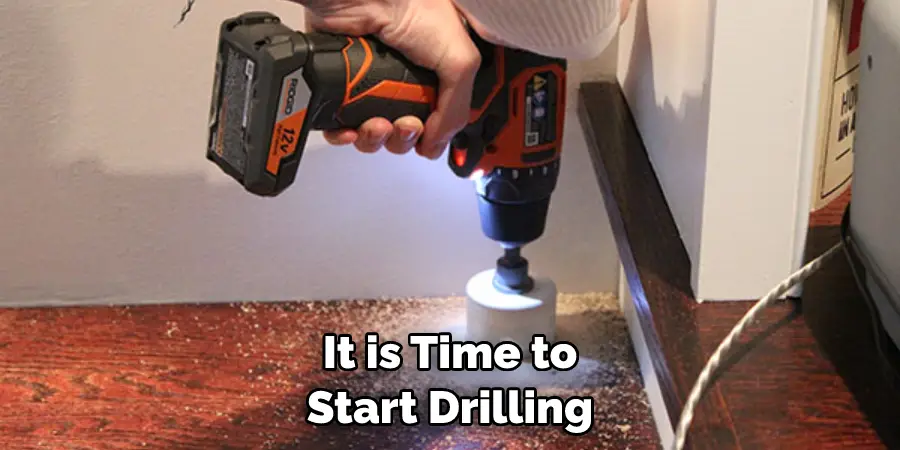
Step 4: Finishing Up
Once you’ve reached the desired depth, stop applying pressure and bring the drill up from the desk. Remove any debris or sawdust that has accumulated in and around the hole. You can use a cotton swab and some rubbing alcohol to clean any remaining residue. Make sure to also remove the masking tape from around the hole.
That’s it! Now you know how to drill a hole in your desk so that you can make innovative changes to your workspace – or just have more storage options. With these guidelines, the possibilities are endless. Happy drilling!
Additional Tips and Tricks to Drill a Hole in a Desk
- If you are drilling a hole in an electronic device like a laptop charger, be sure to measure the size of the plug before drilling. This will help ensure that the hole is not too big or small for the plug.
- When using an electric drill, always wear safety goggles and gloves to protect your eyes and hands from flying particles. Additionally, never put your hand in front of the drill bit when it is in motion.
- When drilling into metal, use a slower speed on the drill and be sure to have adequate ventilation for fumes.
- You can also use a countersink bit after drilling to make sure that there are no jagged edges around the hole. This will help ensure that your plug fits flush against the surface.
- When drilling into wood, use a drill bit specifically made for that material and make sure there are no nails or screws in the area you are drilling into.
- If you need to drill multiple holes with the same size and spacing, use a jig or template to ensure accuracy. This can help prevent having to start over due to a mistake.
- If you are drilling into sheetrock, use a punch first to make a starter hole for the drill bit. This will help prevent any cracking or crumbling of the material around the hole.
- When drilling a large hole, start with a smaller bit and gradually increase in size until you reach your desired size. This will help to prevent cracking or splintering of the material.
- When finished, always use a vacuum to remove dust and debris from the area around the hole. This will help ensure that your device is securely mounted in place.
- Finally, be sure to unplug your drill when not in use and store it away safely when you are done. Doing so will help to prevent any accidents or damage to the drill or desk.
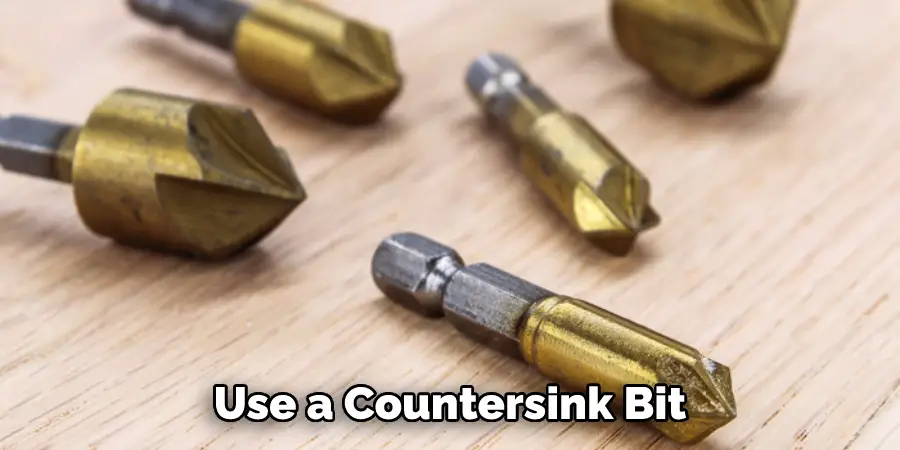
By following these tips and tricks, you can easily drill a hole in your desk without making a mess or damaging the material. With some patience and practice, anyone can create perfect holes for their electronic devices with ease! Good luck and happy drilling!
Precautions Need to Follow for Drilling a Hole in a Desk
- Wear protective eyewear and a dust mask to protect your eyes, lungs, and face from flying wood and metal particles. You may also consider wearing gloves for additional protection.
- Make sure that the drill you are using is suitable for the material of your desk. The wrong type of drill could damage the material or make it difficult to get an accurate hole size.
- Measure the spot you want to drill beforehand or use a template for consistent hole placement. This will help ensure that your holes are even and look great!
- Secure the area where you plan to drill by placing a piece of scrap wood underneath it. This will absorb any shock from drilling and keep vibrations from damaging the desk surface or nearby areas of the desk.
- Use a sharp drill bit for optimal performance and accuracy. A dull or worn-out bit can cause splintering around the hole, unsightly edges, or wonky shapes when drilling into wood.
- Start off at the lowest speed setting and gradually increase to your desired speed as you drill the hole. This will help ensure that you don’t end up with a hole that is too large or too small.
- Have a vacuum ready to clean up the dust and debris as you drill. This will help keep your workspace safe and tidy, as well as ensure that the holes are nice and clean!
- Once the hole is drilled, use sandpaper to smooth out any rough edges. This will create a professional look and ensure that the hole is safe to use with any hardware or accessories.
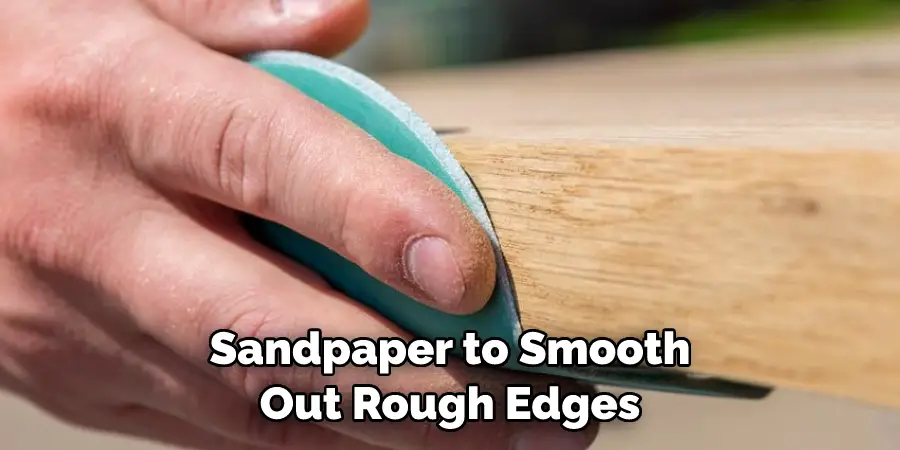
Following these precautions will help ensure that you drill a perfect hole in your desk every time! With the right tools and technique, drilling holes in a desk can be an easy and satisfying task. And once you’ve finished, you can enjoy the improved functionality of your workspace for years to come.
Frequently Asked Questions
What Kind of Bit Should I Use?
The type of bit you should use will depend on the material of your desk and the diameter of the hole you’re drilling. For desks made from softer materials such as wood, plastic, or MDF board, a high-speed steel twist drill bit is generally suitable. If you’re drilling through metal or hardwood, however, it may be best to opt for a masonry bit instead.
How Do I Choose the Right Bit Size?
In most cases, you should choose a drill bit that is slightly larger than the diameter of your hole. This will give you room to adjust for imperfections in any existing holes and ensure the new hole fits snugly. For example, if you need to drill an 8mm hole, it’s best to use an 8mm or 9mm bit.
How Do I Measure the Depth of My Hole?
Measuring the depth of your hole can be tricky, but there are a few methods you can use. One way is to mark the desired depth on your drill bit with a permanent marker. Another option is to attach a piece of tape or string at the right length and use it as a reference. Finally, you can also buy specialized depth-measuring tools to simplify the process.
What Are the Best Techniques for Drilling Holes in Desks?
When drilling through any material, it’s important to go slowly and use even pressure. This will help ensure that your home is clean and of consistent depth. You should also use a drill press or jig to keep your drill bit steady and prevent it from wandering off course. Finally, be sure to wear safety glasses and follow all necessary safety protocols when operating power tools.
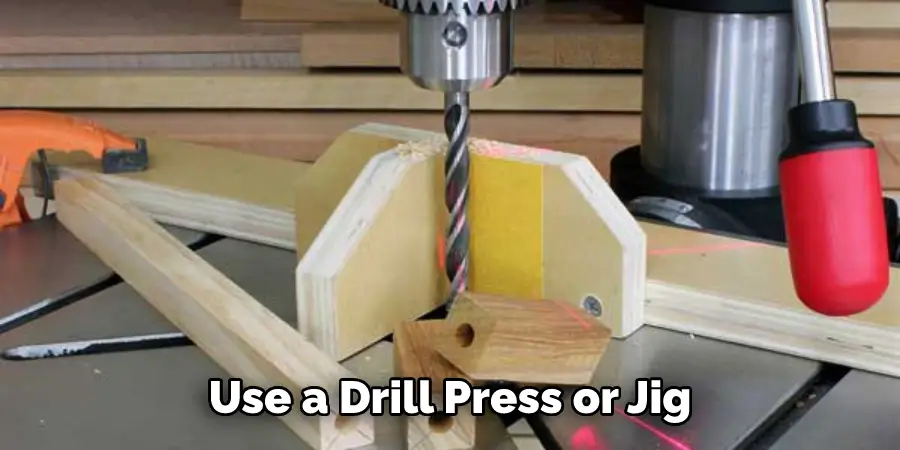
Conclusion
Now you know how to drill a hole in a desk the right way! By following these tips and techniques, you can create perfect holes with minimal effort. Remember to use the correct type of bit for your material, measure your depth accurately, and take all necessary safety precautions when using power tools. Now that you know how to do it, go ahead and give it a try!
You Can Check It Out to Stop Desk From Shaking on Carpet

